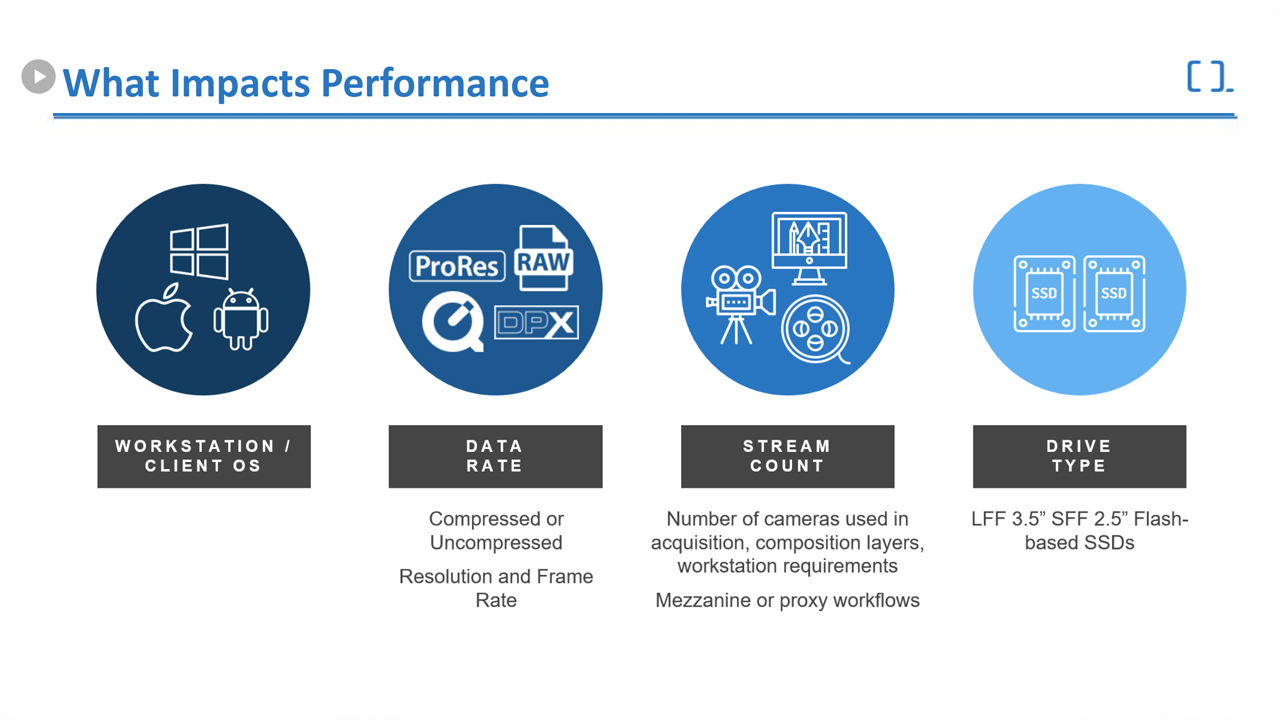A team of eight creatives can lose $100,000 a year in productivity just searching for files, according to Chris Collum, president of systems integrator 1303 Systems. Speaking at last week’s StudioDaily webinar on the economics of high-performance storage, Collum made the case for creative organizations to implement shared storage environments that don’t require copying content to and from external hard drives, and that support high-resolution workflow at 6K, 8K and even 16K.
“Creatives, on average, search for a file 83 times a week with just over a 53 percent success rate,” Collum said, illustrating how a haphazard storage strategy can hamstring media professionals. Centralized storage that allows a team to edit files in place — along with a media asset management system — constitutes a better monetary investment, he argued.
John Lassiter, director of broadcast production at the University of Alabama, agreed, noting that production became many times more efficient after his operations moved media to a shared server. “Any of you who may be working drive to drive, it’s very difficult to go back and locate files and create projects for the future when you don’t have any idea where the assets may exist,” he told attendees. “The heartbeat of that production team is that server. Without it, we would probably work at a tenth of the pace we do now.”
Lassiter acknowledged that one of the biggest challenges in setting up that production environment, especially in the context of a state institution, was securing funding. “That is always going to be a little bit of a different challenge, depending on how your leadership sees your role within the institution,” he noted. “Any time we came across a issue or had something we couldn’t turn around in a timely manner, I used it as an opportunity to remind [leadership] what this centralized server would do for us from a workflow and archival standpoint. And eventually it breaks through and we acquired the funding.”
Jason Coari, global director of product and solution marketing at Quantum, which sponsored the webinar, showed benchmarks from Quantum’s internal testing that offered some guidelines on how to configure storage for maximum return on investment. He cautioned that, just because flash-based technology is the highest-performance storage on the market, loading up on flash isn’t always the right answer.

The first two storage arrays on the left are configured with 7200rpm SAS drives; the only difference is the number of drives. The next one uses faster 10,000K SAS drives. The last system is an all-flash array with 48 SSDs that tops out at 76 TB of capacity.
Quantum
In one set of tests, Quantum compared the number of simultaneous real-time streams of 4K and UHD media that could be supported by four different storage array configurations, starting with 7200rpm SAS drives and going all the way up to all-flash SSD arrays. The company found that while flash could dramatically accelerate compressed 4K workflow, the advantages were much more muted when it came to uncompressed files.
“When you’re working with compressed 4K media, flash really makes a difference,” Coari said. “If you’re working with uncompressed formats, there is some difference in performance, but I can tell you right now that, for the price you’re going to pay for SSD versus spinning disk, you’ll be much better off just using spinning disk.”
The secret, he explained, is that once an array of spinning disks gets up to speed, their aggregate bandwidth can be substantial, especially in uncompressed workflows that require few I/O operations. Compressed media workflows with high stream counts are more taxing on storage, with more I/O operations, making flash more attractive. What’s more, the compressed files are smaller, which means flash capacity, which is much more expensive on a per-GB basis, won’t be as taxed by the extraordinary file sizes associated with 4K footage.
And Coari stressed that flash still provides the best performance overall. “If your editing team is doing a lot of real-time online work with really high-resolution formats, you may actually need the performance of flash regardless of compressed or uncompressed,” he said. “Otherwise, we should still consider hard disk drives.”
For more insight from Collum, Lassiter, and Coari check out the complete webinar, which is available for replay on demand.
